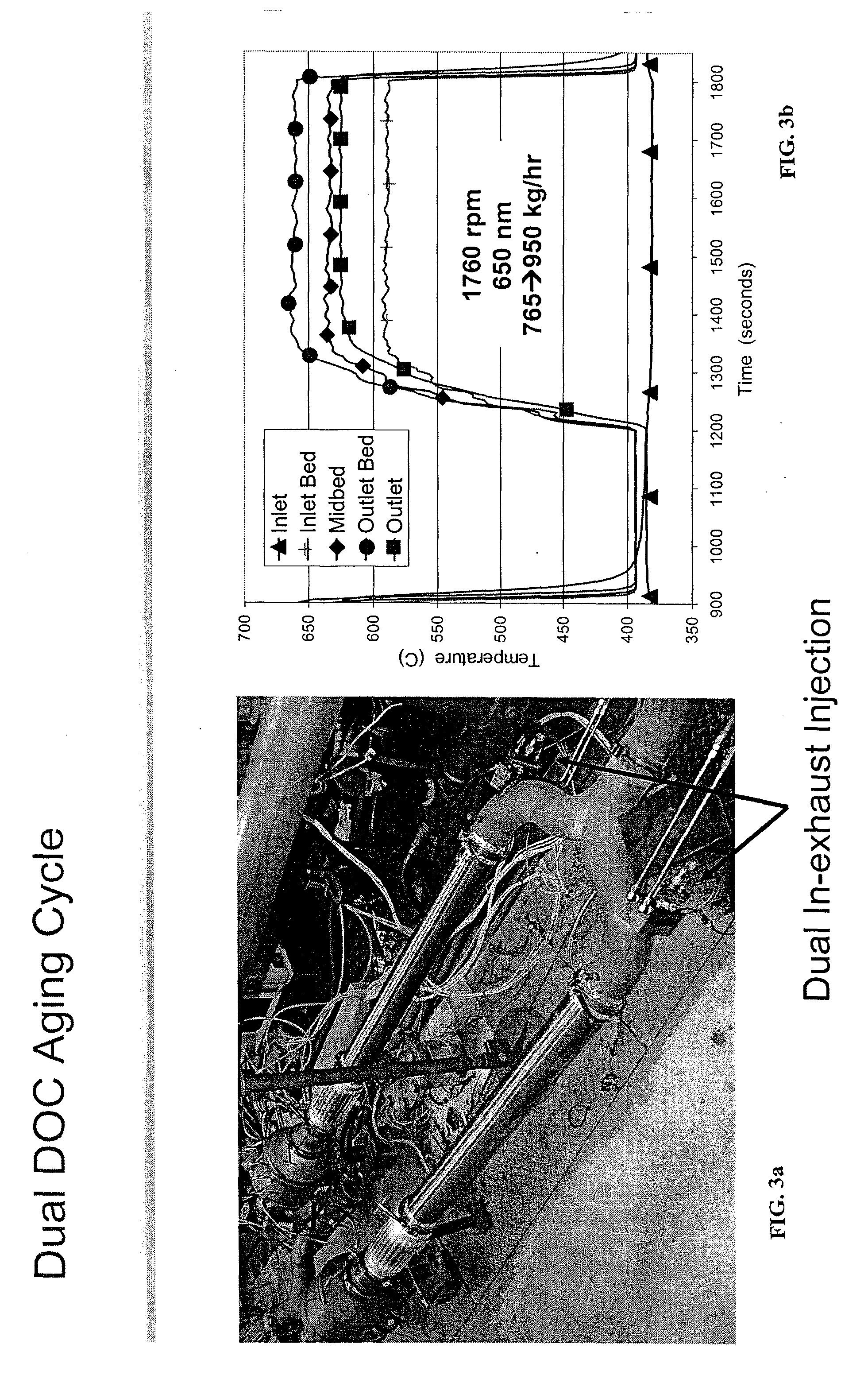Architectural diesel oxidation catalyst for enhanced no2 generator
a technology of oxidation catalyst and engine, which is applied in the direction of metal/metal-oxide/metal-hydroxide catalyst, machine/engine, arsenic compound, etc., can solve the problems of increased engine-out levels of co and hc, not nearly as effective as pt, and increased doc cost,
- Summary
- Abstract
- Description
- Claims
- Application Information
AI Technical Summary
Benefits of technology
Problems solved by technology
Method used
Image
Examples
Embodiment Construction
Engine Tests
[0065]For engine tests, various oxidation catalysts were evaluated individually or in conjunction with a common diesel particulate filter.
[0066]PGM loadings and distributions for the different samples are summarized in FIG. 1. The total noble metal content in grams is in relation to the volume of the catalyst. Front and rear zone lengths for each sample were equivalent. Overall PGM quantities were equivalent. As a result, noble metal costs for the different devices varied. FIG. 2 shows the relative cost for the different samples for a defined Pt and Pd cost basis. Note that historically Pt has been more highly valued than Pd. As a result, at equivalent loadings, platinum-rich formulations are more costly. Catalytic coatings were applied using methods which are common to one skilled in the art.
[0067]To produce oxidation catalysts according to the invention and comparative catalysts, homogeneous silicon-aluminum mixed oxide (5% by weight SiO2 in relation to the overall mas...
PUM
| Property | Measurement | Unit |
|---|---|---|
| temperature | aaaaa | aaaaa |
| exhaust gas temperatures | aaaaa | aaaaa |
| thickness | aaaaa | aaaaa |
Abstract
Description
Claims
Application Information
 Login to View More
Login to View More - R&D
- Intellectual Property
- Life Sciences
- Materials
- Tech Scout
- Unparalleled Data Quality
- Higher Quality Content
- 60% Fewer Hallucinations
Browse by: Latest US Patents, China's latest patents, Technical Efficacy Thesaurus, Application Domain, Technology Topic, Popular Technical Reports.
© 2025 PatSnap. All rights reserved.Legal|Privacy policy|Modern Slavery Act Transparency Statement|Sitemap|About US| Contact US: help@patsnap.com



